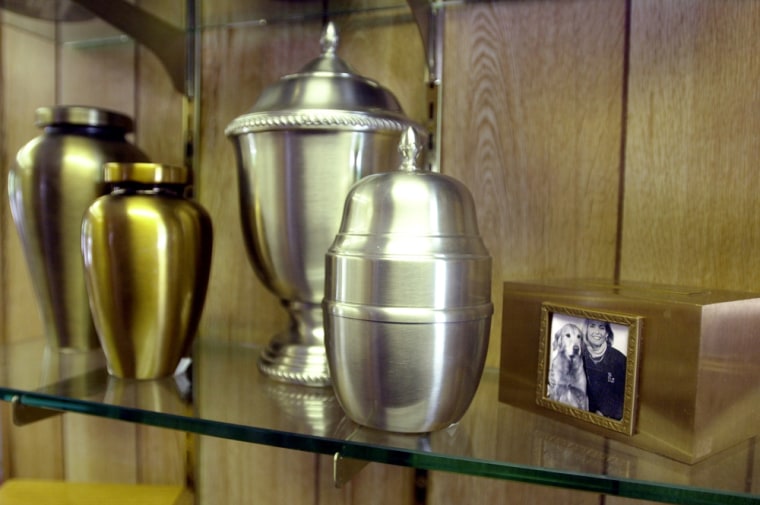June 27 was a black-letter day in our home. That’s when we said goodbye to our 6 1/2-year-old Cavalier King Charles Spaniel, Darcy, who suffered from chronic valvular disease, a condition that leads to heart failure.
Even though she'd been ill for months and we knew that day was coming, it didn't ease the pain of parting.
Knowing when it’s time to euthanize a beloved pet is never easy, not even when your dog or cat has reached a venerable age. When she’s in what should be the prime of her life, like Darcy, it’s even more difficult.
But whatever your pet’s age, the same factors apply when it comes to evaluating quality of life:
- Is she still eating?
- Does she still enjoy interacting with people?
- Is she physically comfortable?
- Can she still control her bladder and bowels?
- Can her medical problems still be managed?
When the answer to most of those questions is no, it’s time to consider giving your dog or cat a peaceful exit from life.
Darcy ate well up until the night before she died, but I had to hand-feed her that last meal because she was too weak to eat on her own. She had very little energy, although she would make an effort to greet her favorite people. Being carried up and down the stairs to go out to the bathroom was uncomfortable for her because it compressed her chest. The drugs she was on no longer helped for any appreciable length of time, despite high doses. Worst of all, she started having difficulty breathing. After two last-ditch hospitalizations to try to stabilize her, we knew it was time to let go.
Because you know your pet best, only you can decide when the time is right, but don’t be afraid to ask your veterinarian or a close friend who’s also an animal lover to help guide you. Often, they can see things more clearly because they aren’t as emotionally attached.
“Most vets are very good at helping owners understand when the quality of life is degraded to the point that it is time to say goodbye,” says Susan Little, a veterinarian and the president of the Winn Feline Foundation. “When pets have more bad days than good, when they cease interacting with owners, or when medical problems can’t be controlled or are too burdensome, then it’s time to say goodbye.”

If she could, your pet would thank you for caring enough to relieve her pain.
Just as important as knowing when to say goodbye is knowing that it’s OK to grieve. The tears and rituals of grieving are as comforting and necessary with the deaths of our companion animals as they are with our human friends and family. If you fear that friends, family or coworkers won’t be supportive, take advantage of the many pet loss hotlines, support groups, and chat rooms that are available nationwide or online. Attending a support group or calling a hotline is a way of sharing your grief with likeminded people.
Bereavement counselor Betty J. Carmack, author of "Grieving the Death of a Pet," says, “Oftentimes, people will say to me, ‘This is the only place I can come and really talk about it.’ Many people feel that they can’t talk about it at work because it’s minimized or laughed at or people expect them to be able to function normally and it’s really hard for them to do that or they feel like they’re not getting support from their family or friends. The support group is a safe place where they can talk about their feelings.”
When a friend's pet dies
Even if you don’t have pets yourself, understand that grief for their loss is real and respond the same way you would to someone who had lost a human family member. A simple “I’m sorry; I know how important he was in your life,” means a lot, Carmack says. If you want to do more, send a card or flowers, or make a donation in honor of the animal to an animal health or welfare organization.
We were fortunate to be surrounded by people who understood and shared our sense of loss. Darcy was a favorite with everyone who knew her. The neighbors came over, and we drank a toast to her and told funny stories about her. We received cards and flowers, and several people made donations in her name to what has now become the Darcy Fund, which will finance research into the causes and cures of CVD.
Rituals and remembrances
Memorializing a beloved pet can take any number of forms: lighting a candle, framing a favorite photo, planting a living memorial such as a tree or flowering plant, scattering cremated remains in your dog or cat’s favorite place, or saving a collar, tags and a favorite toy in a special box. Some people choose to bury their pets in special cemeteries. Some companies sell necklaces designed to hold a small amount of their pet's ashes. Another even turns pet cremains into a man-made jewel.
We had remembrance rituals for Darcy, but we wanted to do more.
In forming the Darcy Fund, we followed the lead of our friend, pet writer and radio host Steve Dale, who started the Ricky Fund in 2002 after his cat died of hypertrophic cardiomyopathy, a type of heart disease. To date, the Ricky Fund has raised approximately $70,000 and helped fund the discovery of the gene responsible for the disease in Maine Coon cats, which led to an easy cheek swab test for breeders to identify carriers. We hope the Darcy Fund will be equally successful in combating CVD.
However you choose to honor the life of your animal companion, remember that although your pet may be gone, the love between you is not. People often feel that their pets have taught them life lessons, Carmack says, and that legacy remains.
“Their presence in your life is in a different form, but those lessons can continue,” she says. “Look for the lessons, look for the gifts.”
